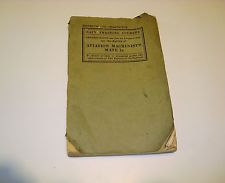During
working hours that idle week, dressed in my new denim dungarees and blue work
shirt, I roamed the flight lines and hangars to familiarize myself with the
different types of airplanes. There were
the Ryan ST training planes, a squadron of Brewster Buffalo fighters that were
manned by enlisted pilots, two squadrons of F4F Grumman Wildcat fighters, a
squadron of Douglas SBD dive bombers from a carrier in port, and two squadrons
of Consolidated Aircraft PBY-1 patrol bomber flying boats that were not flyable
but that we would use in the mechanics’ classes.
The
old TBM biplane provided my first ride in a Navy airplane. It was probably one of the ugliest and
clumsiest airplanes ever built. It had
tall awkward fixed landing gear so that torpedoes could be carried under the
belly of the fabric-covered fuselage (TB stands for torpedo bomber), three open
cockpits under the broad fabric covered top wing, and was powered by a very
noisy Wright Whirlwind seven-cylinder radial engine. It was a primitive flying machine even in
1940.
One
afternoon I was poking around the flight line and fell into a conversation with
the first class aviation machinist mate that was the crew chief on the
TBM. When he found that I was an AMM
striker and had never flown in a Navy airplane, he offered me a ride in the
mechanic’s cockpit of the old airplane.
He was to ride in the rear cockpit to drop a couple of parachute dummies
and the airplane would be flown by a Chief NAP (enlisted naval aviation pilot)
from the middle cockpit.
The
mechanic’s cockpit, protected only by a small square windscreen, was located
forward immediately behind the radial engine—so close to the engine that the
mechanic’s feet actually straddled the accessory section. When the old airplane was ready to go, the
crew chief scrounged a helmet, goggles, and seat-pack parachute for me from the
supply room. I climbed into the high
cockpit, one more feeling like Errol Flynn in “The Dawn Patrol”.
It
was a very noisy, breezy ride. The old
engine had no mufflers, only short exhaust stacks that belched smoke when the
engine started, then blue flame when it had warmed up. The noise was literally overwhelming and
voice communication with the other crew members was impossible. I gloried in it, however. We took off and flew east of San Diego to a
drop range area. I was relieved to see
that both parachutes functioned perfectly because they were the same as the one
I was wearing.
After
the drops, the pilot circled back over San Diego at three thousand feet
altitude and I had a magnificent view of the bay area. I could identify the naval training station,
Lindbergh Field where Charles Lindbergh’s “Spirit of Saint Louis” had been
built, the naval air station on North Island, and literally dozens of grey Navy
ships of all types. It was exhilarating
and, in spite of the din of the engine exhaust, I was a bit sorry when the big
wheels touched down on the landing strip.
Class
4-41 of the Aviation Machinist Mates school was formed on 1 October 1940. There was approximately one hundred of us
under class officer Lt. Faber, a genial reserve officer, a Chief AMM Woods, and
Chief AOM (aviation ordnanceman) Freer.
The class was broken down into sections of twenty-four individual
classes in airplane construction, engines and carburetors, electrical and
instruments, propellers and fuel systems, and armament that included 45 caliber
pistols, 30-caliber and 50-caliber machine guns.
The
first two months of AMM school before Christmas leave consisted of classroom
work in each subject. The basics were
duck soup to me. I scored 87.5% on the
construction exam, 90% in electrical and instruments, 95% in propellers and
fuel systems, 96% on the 45 caliber pistol, and 100% on machine guns. The only score I did not like was 75% on
engines and carburetors, especially since engines were on of my principal
interests. The explanation was that the
engine exam came on a Monday after a payday weekend when Langford and I had
made liberty and I took the exam still suffering from a first-class hangover!
On
the 22nd of November I was automatically advanced from apprentice
seaman to seaman second class which brought about my first pay raise—from $21 a
month to $36 per month. That added a
second white strip to the cuffs of my dress blues and the white winged
propeller badge of an AMM striker to my lower left sleeve.



No comments:
Post a Comment